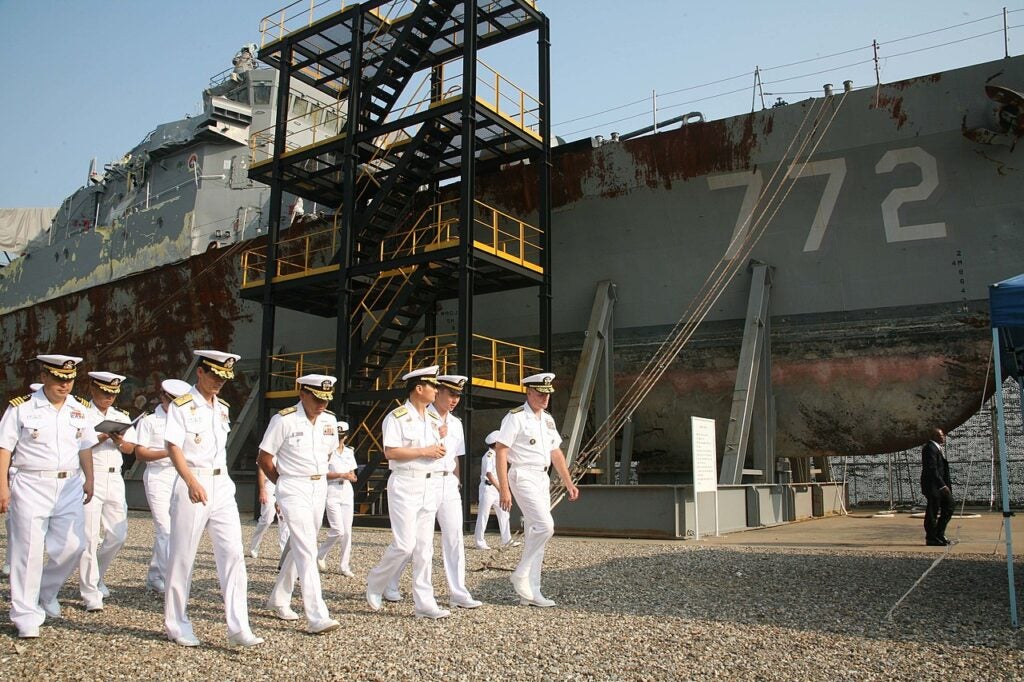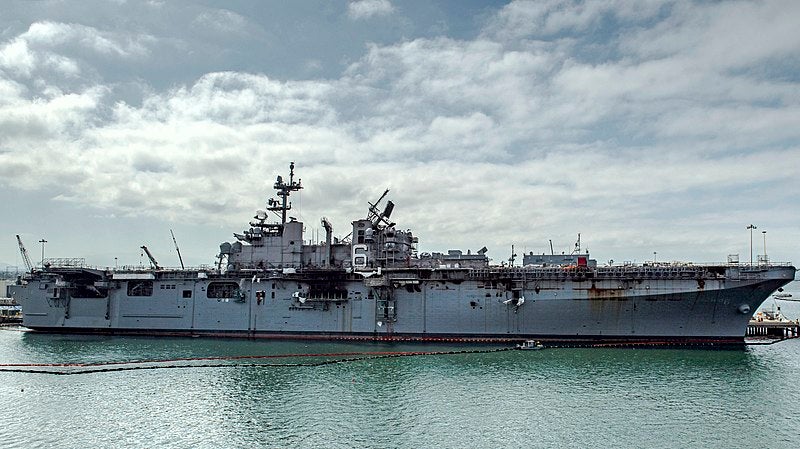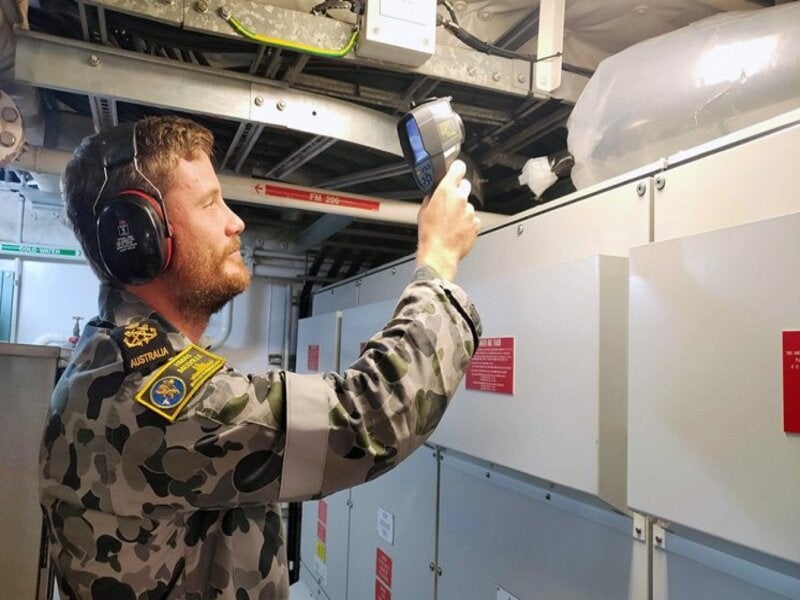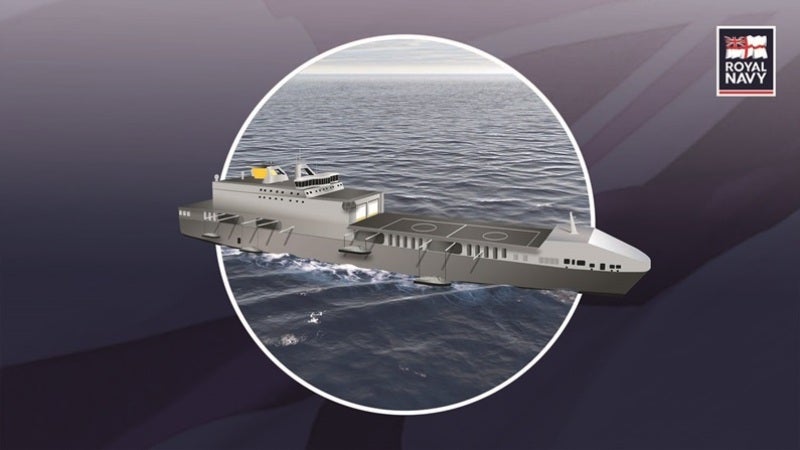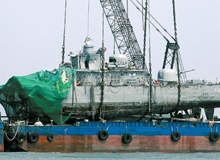
With an indignant South Korea’s Cheonan sunk, resulting in the loss of 46 lives, and the North manifestly protesting its innocence, discovering what really befell the corvette was never going to be easy in this unique corner of the world where the geo-political influences of the US, China and Russia abut so abruptly.
In late April 2010, once the vessel had been recovered and taken to the Pyongtaek Naval Base, South Korea began an investigation with US help, later announcing its intention to establish a multinational team, presumably to bolster the legitimacy of any findings that were made. This joint civilian-military investigation group (JIG), which comprised 25 South Korean and 24 international experts – from Australia, Sweden, the UK and the US – ultimately published a report concluding that a torpedo, fired by a North Korean submarine was the “only plausible explanation” for the sinking.
Although this widely reported outcome has, inevitably, not found universal acceptance and there are some questions regarding the personnel involved, the methodology adopted and the degree of independence from South Korea’s military that remain unanswered, their analysis is the most comprehensive extant. The ongoing Russian investigation will reach its own conclusions in due course and the Chinese may yet respond to the invitation to examine the evidence for themselves – but none of this detracts from the window that the JIG report provides on the investigative process and the technologies involved.
The torpedo hypothesis
How well do you really know your competitors?
Access the most comprehensive Company Profiles on the market, powered by GlobalData. Save hours of research. Gain competitive edge.

Thank you!
Your download email will arrive shortly
Not ready to buy yet? Download a free sample
We are confident about the unique quality of our Company Profiles. However, we want you to make the most beneficial decision for your business, so we offer a free sample that you can download by submitting the below form
By GlobalDataFrom the moment that South Korean Minister of National Defence Kim Tae-Young commented (a day after the ship’s bow section had been lifted from beneath 45m of water) that a torpedo attack was the most likely cause, the idea was set for particular scrutiny. This hypothesis generates two key issues to be examined; firstly – and most obviously – was such a weapon used, and secondly, if so, how did the anti-submarine corvette, operating in the vicinity of a joint US / South Korean anti-submarine exercise, fail to detect the threat?
See Also:
Examination of the ship’s structure and, specifically, the nature of the damage and the shape and directionality of the hull deformation, inevitably plays a major part in the investigating teams’ work when assuming any possible case of torpedo assault.
In the instance of the Cheonan, a preliminary investigation soon established that there was a lack of evidence to support the contention of an actual strike directly against the hull, but strong indications that a large, non-contact underwater explosion had split the vessel in two.
Shockwave-and-bubble model
Precise measurement and analysis of the damaged region of the hull, where the centre vertical keel had suffered “significant upward bending”, led the JIG team to suspect the shockwave-and-bubble effect produced by explosive proximity. Further corroboration of this view came from a number of sources. The upward directionality of the deformation observed in the bottoms of the bow and stern recovered sections, as well as to the port side of the gas turbine room, which was near-central to the blast, were entirely consistent with such a characteristic pressure wave. The damage to the main deck and the fin stabiliser, the transection of wires without any evidence of excessive heat, the autopsy results of the recovered bodies and eye-witness accounts of a white pillar of water also all appear to support the torpedo hypothesis.
The numerous simulations the JIG team ran of the scenario agree – pointing to an detonation with a net explosive weight of 200kg-300kg, occurring at an underwater depth of between 6m and 9m, around 3m to the left of the centre of the gas turbine room.
Seismic and video analysis
The emerging shockwave-and-bubble model was further buoyed by seismic data from local monitoring stations. According to analysis by the Korea Institute of Geosciences and Mineral Resources, four stations detected seismic wave intensity of 1.5°, 11 measured two infrasound waves with a distinct 1.1 second interval and both phenomena – indicative of the resulting pressure wave from an underwater explosion – originated from exactly the same, single point of origin.
Thermal video images, which had been filmed by observation stations in the area, further helped establish the timeline of the incident and the tie-in with the reported seismic events. Three seconds of footage, beginning at 21:02:26, show the corvette travelling normally; at 21:22:38 the bow and stern are clearly separated, the bow lists to 90° while the stern sinks and by 21:23:39 is gone.
Less than 45 minutes later, by 22:07:23, the bow also goes under. Analysis of these key sequences uncovered by the JIG team, along with 40 minutes of video – beginning at 21:23:46 – taken from the guard post on the nearby Baengnyeong Island was also to lend weight to the torpedo consensus explanation.
North Korean stealth technology
With the fortuitous subsequent discovery of components of a North Korean-made CHT-02D torpedo, bearing markings in the Hangul script used in the North, the question remains how the Yeno Class mini-sub suspected of firing it could approach undetected. Despite some speculation to the contrary – largely amid the ranks of “armchair admirals” – the answer almost certainly lies in the nature of the vessel and the topography of the coast around Baengnyeong Island, rather than any suggestion of a North Korean leap of “stealth” technology.
Small, old fashioned, diesel-electric submarines are difficult to spot at the best of times with sonar systems principally designed to protect convoys from their larger counterparts in the open ocean, making these shallower, rocky waters a good place for a 130t vessel to operate. It is not difficult to see how such a craft could position itself to launch the kind of acoustic / wake homing, passive acoustic tracking torpedo implicated in the incident. According to the JIG report, their intelligence analysis established that “a few small submarines and a mother ship supporting them left a North Korean naval base in the West Sea a few days prior to the attack and returned to port two to three days after the attack.”
In an interview for DailyNK – a South Korean publication supporting the democratisation of the North – a former North Korean submariner confirmed the existence of camouflaged command ships, stripped down to accommodate small submarines in their holds. Lee Kwang Soo also shed some light on why the Cheonan failed to register the incoming weapon. Unlike its Yugo Class predecessor, Yeoneo subs have no torpedo tube, two medium-sized, electrically fired torpedoes being fitted to their sides. Electric initiation circumvents the unmistakable sound of a compressed air launch, which is easily detected, and as Lee explained, the most important condition for infiltration is secrecy, which means North Korea will not use any method that creates much noise. Some will argue that the JIG case is not proven, but this does at least seem to leave it looking, to use its own terms, “plausible”.
Mini-subs and mother ships disguised as trawlers may sound like the plot of a James Bond movie, but then it is worth remembering that back in 1951, the Korean peninsula did witness the first armed conflict of the nascent Cold War era. The region does, as they say, have history.



